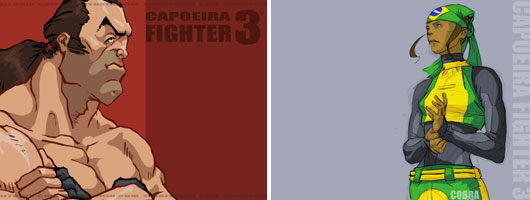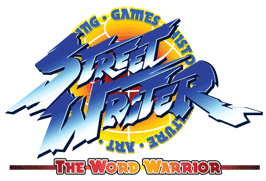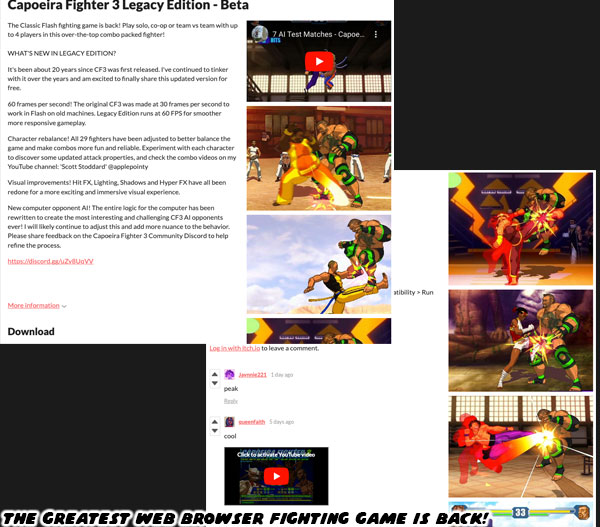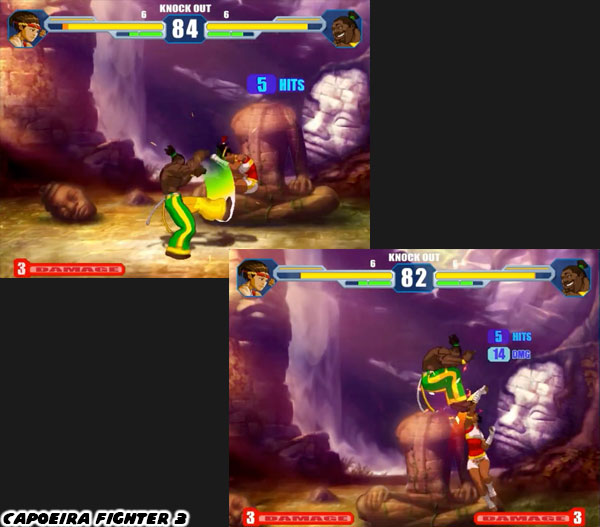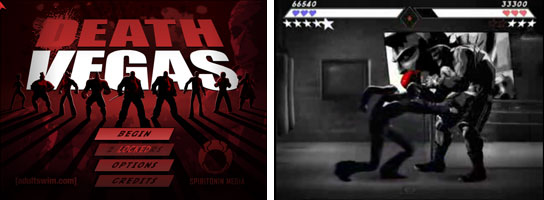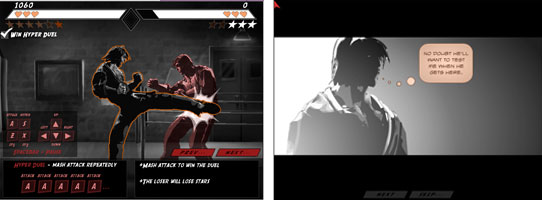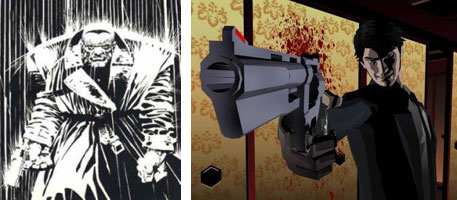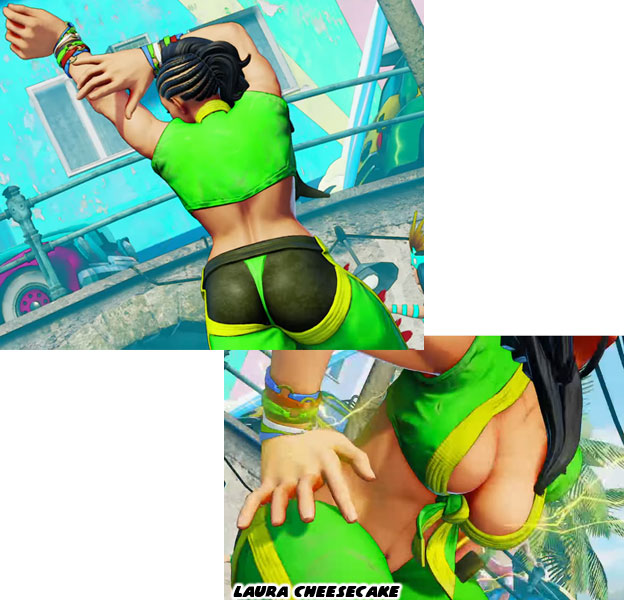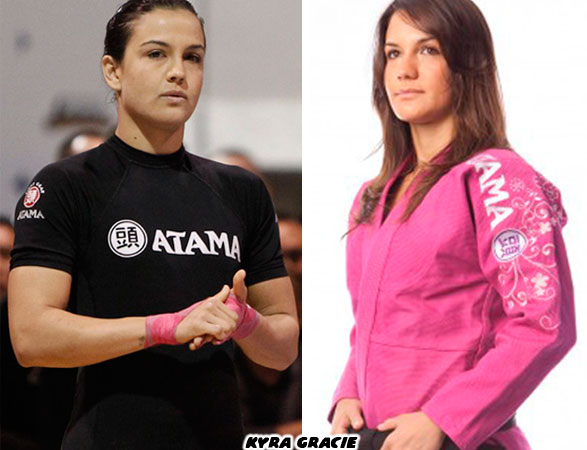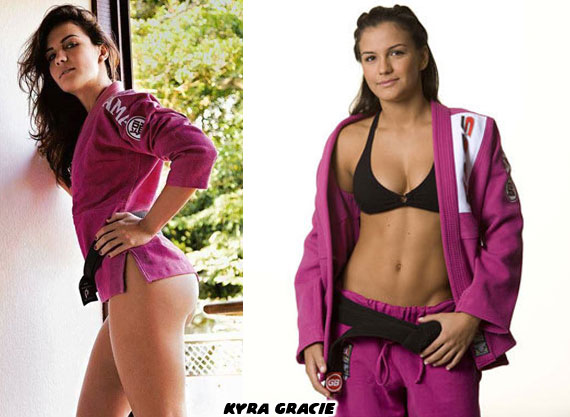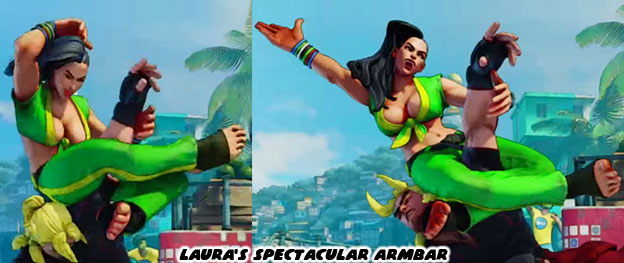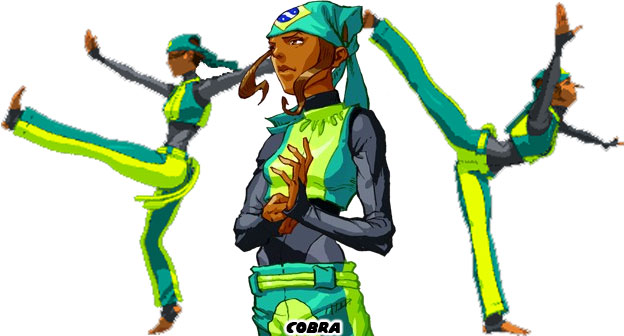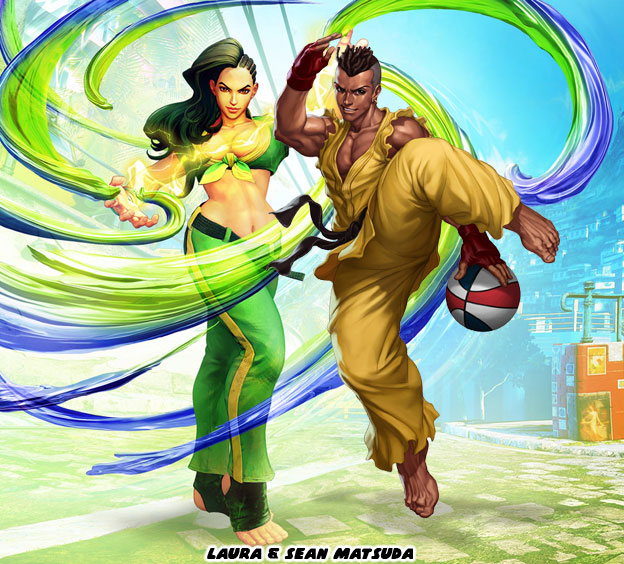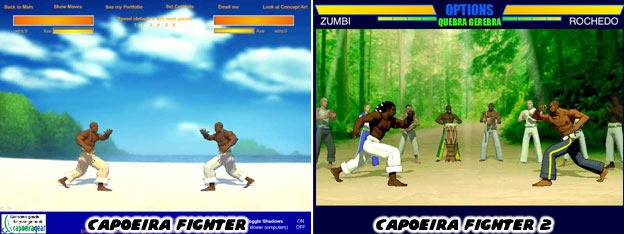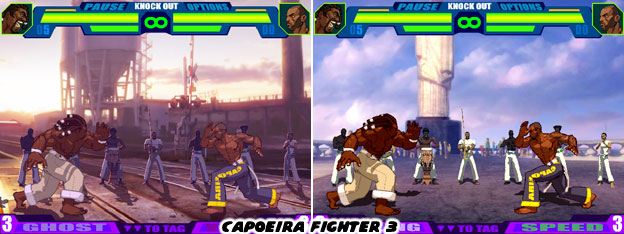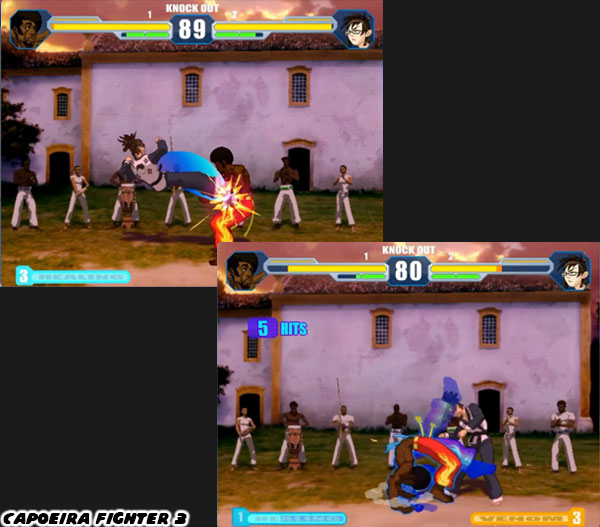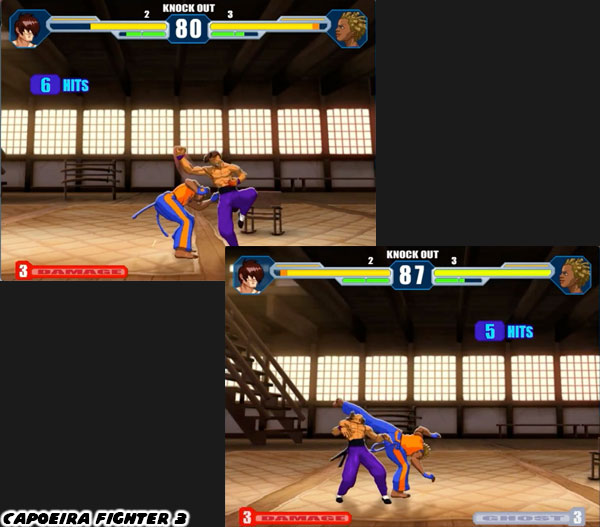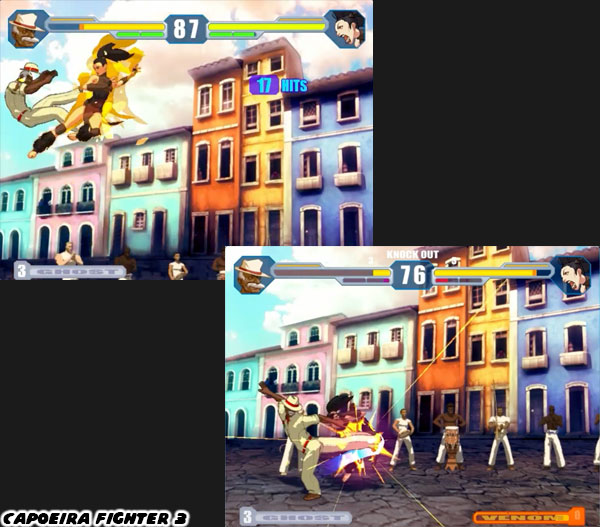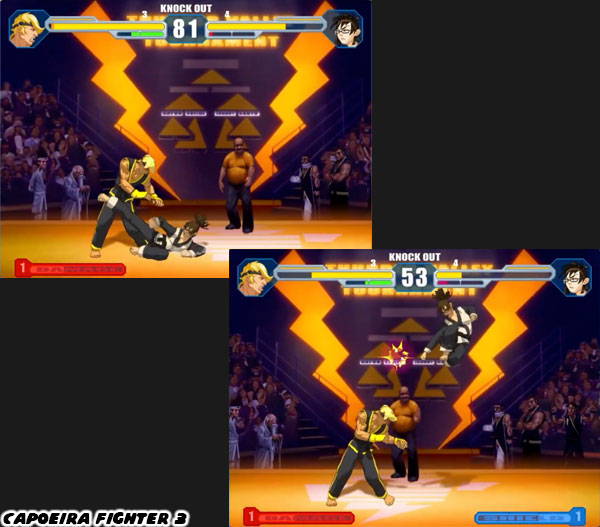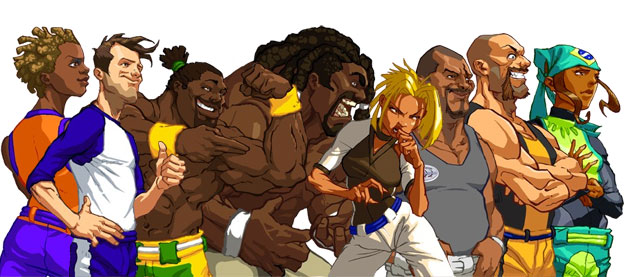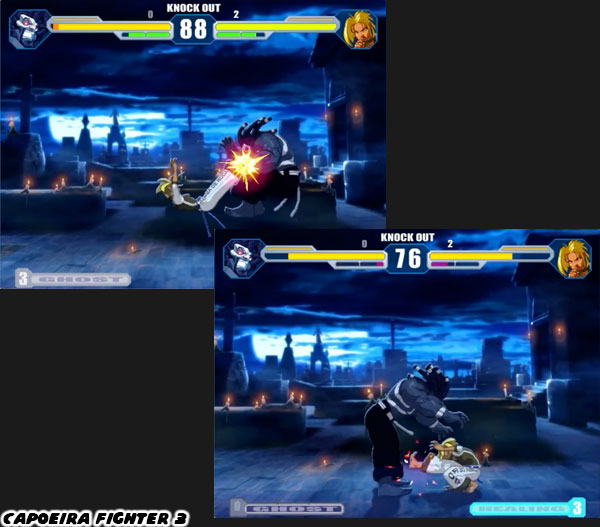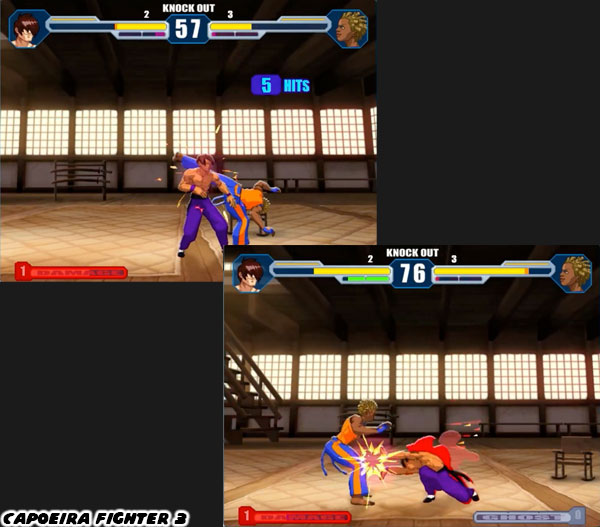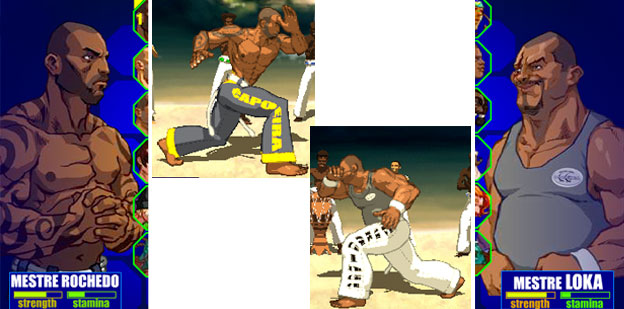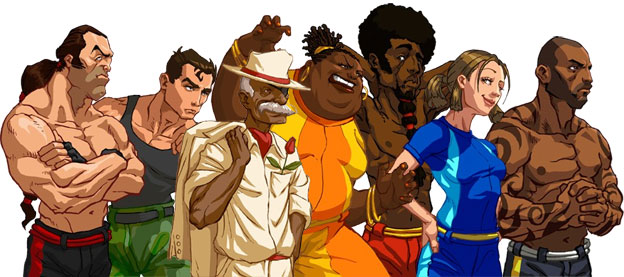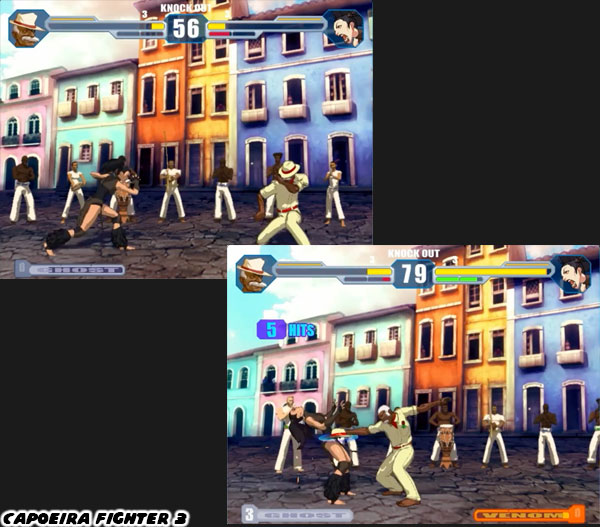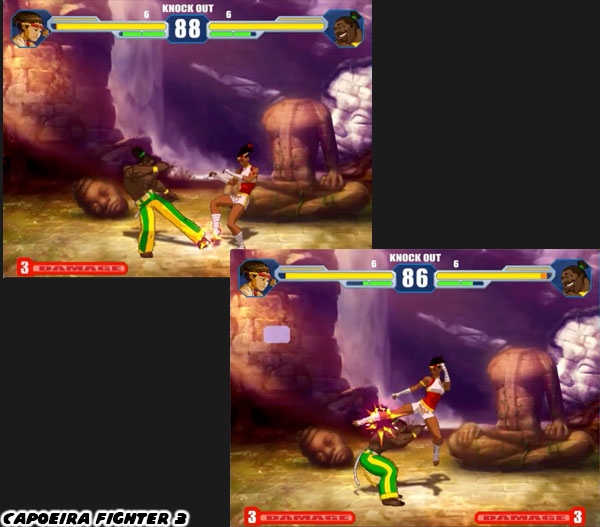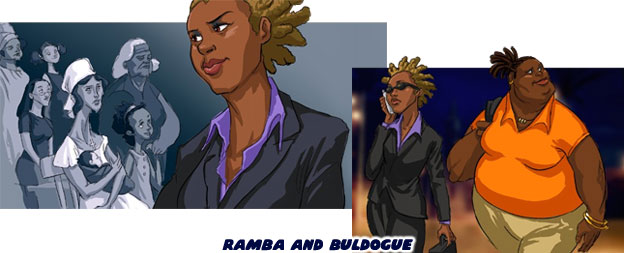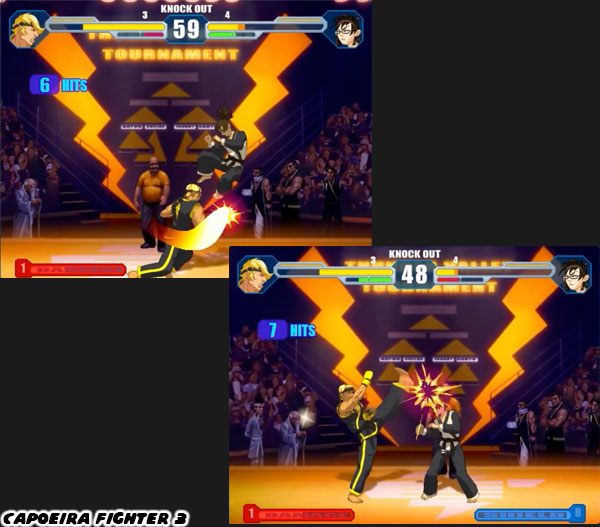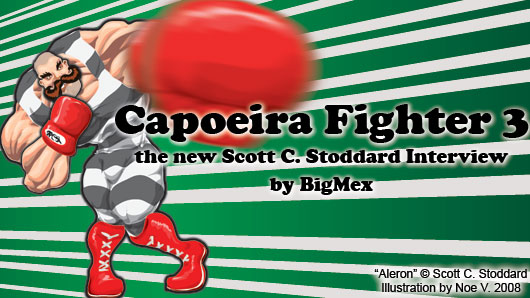
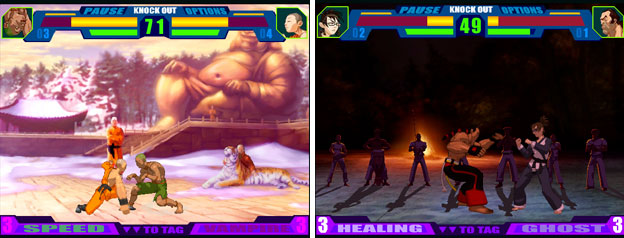
The only guarantee that we have is in Capcom capturing the pure aspect of the fighter without 3D gimmicks. Until SF IV comes out we have to find titles cut from the same cloth. I don't mean a fighter by SNK, Namco, Taito, Sammy or DIMPS, but something more local. The game featured today has a lot of the classic Street Fighter vibe, it's creator inspired by Capcom's greatest, Street Fighter Alpha.
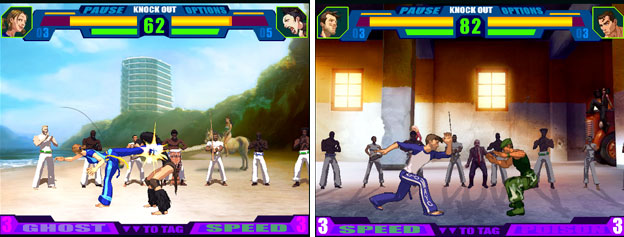
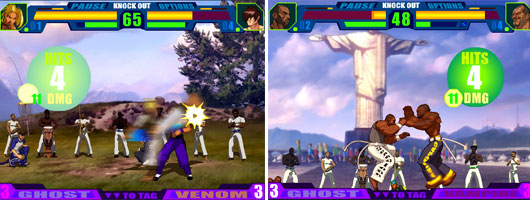
BigMex: Scott, it's great talking with you again. So tell us are you still with the team at Avalanche? I understand the company is part of Disney Interactive now. How is this working out for you?
Scott Stoddard: Disney is a great employer. I did have to animate Hannah's singing lips for the Hannah Montana Wii game, but I'm lead animator on a cool IP project right now. Plus I get into Disneyland free!
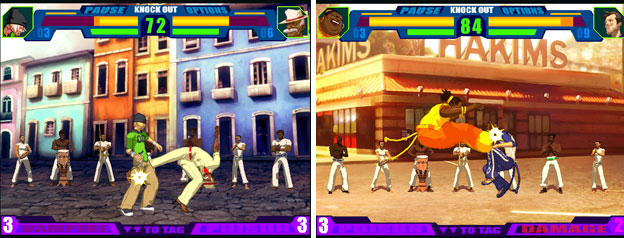
SS: I plan to. I've had a lot of fun with my posts in the past, just been a matter of priorities lately trying to get CF3 out the door. All this coding is turning my brain lefty. I definately need to do more good ol' drawing and painting.
BM: Before we get to the actual CF3 questions is there an upcoming game you are working on with Avalanche that you'd like to mention?
SS: Sorry can't mention anything here, but I can say that it is more exciting to work on than Hannah Montana.
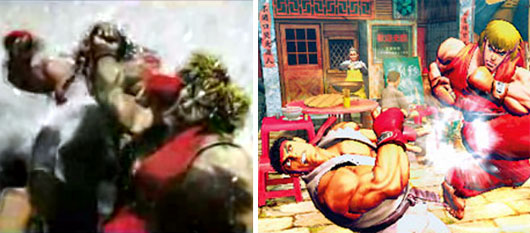
SS: Loved the trailer. Watched it a few dozen times. The motion and ink effect was fun. The impacts and cloth had a great feel to them. Only hitch was the faces and hair. They look really, I mean REALLY bad compared to what I know Capcom is capable of. They've had so many cool stylized versions over the years, but SFIV looks like they hired a middle schooler to design the faces. Very sad to see them going away from the anime look.
BM: Back when I first interviewed you two years ago, you mentioned that Capcom needs to do a cel-shaded 3D fighter with all the characters from past titles. Your words now seem prophetic as details of SF IV have been released. Were these steps logical for the franchise?
SS: As long as the gameplay stays true to the old 2D version, 3D has some very attractive advantages.
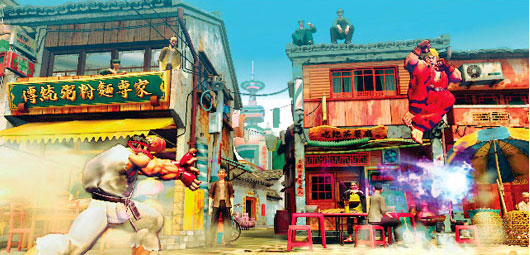
The main thing 2D still has going for it is control. You know exactly what that sprite is going to look like because it is only ever going to be seen from one angle. In a 3D game, an animation might look great from one angle, and terrible from another.

SS: Mostly I'm just curious to see the gameplay in motion. The screen grabs didn't wow me, but you've really got to see it in motion to judge it fairly. Some of the screens looked like the faces were going to be a lot more animated, which looks promising. I guess I would go for Ryu because it would be easiest to get a feel for the new gameplay using a familiar character, unless of course they include Elena... got a soft spot for capoeiras.
BM: What do you think about the Saving / Revenge system that EGM / 1UP has reported on?
SS: Hmm... I'll have to try it out. Sounded kinda muddy in the article I read, but might work better in actual gameplay. The idea of keeping the match interesting to the very end is definitely a good goal.
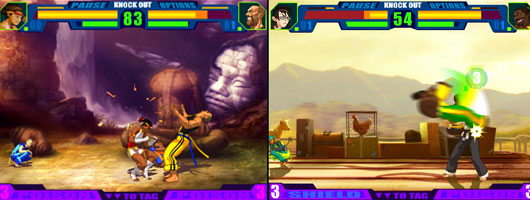
SS: 1,000's easily. Adam Ford who worked on the backgrounds, and had a strong SF background played CF3 with me on our lunch break almost everyday. I also played nights, and my brother John put in quite a few hours with me. Overall I am very satisfied with the final product. There are still a lot of things that other games do better, but I have to honestly say, when I get together with friends that used to play SF, we would rather play Capoeira Fighter now.
BM: How has the reaction been for your title during development and final release?
SS: We've got some diehard fans out there. We're starting to get more fan vids on youtube. That's fun to see what people are doing with the game. I've also invited the shoryuken.com forums to test it out, they have responded pretty positively, and made some very useful suggestions that I implemented. Things are still pretty quiet as the final build is only available on my site right now where it's had a few thousand hits. Shockwave is really where most of the fans play it. I expect things to be more exciting when Shockwave releases the download version in Jan-Feb '08. Usually get over a million hits a month there.
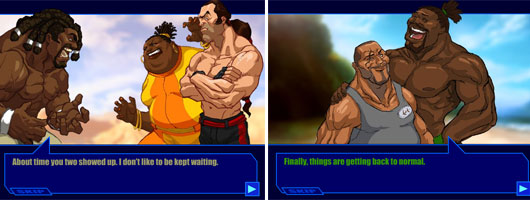
SS: I've talked to a few companies about getting it ported to XBLA and there have been plenty of fans asking for a console version. Turns out it's really tough and expensive to develop for consoles, so to answer your question, we're looking into it, and we want to do it. It's just a matter of finding the right company that is willing to port our game instead of working on their own IP.
BM: There are new and expanded modes in your game, ways to cancel out of combos and supers, a story mode, tag team, solo and versus options. Can you highlight the control scheme and these new modes for us?
SS: Yeah, CF3 is um... full featured to put it nicely (bloated is how I was feeling trying to bug test all the little things I've put in over the years), but the final product is very satisfying and much deeper than most fighting games.

We also added color coated swooshes to indicate overhead hits so you can tell how you need to dodge.
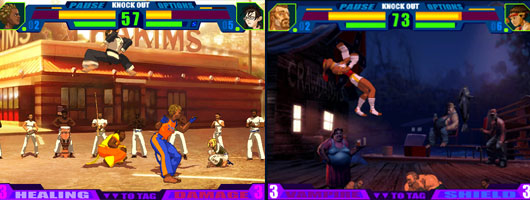
Capoeira Fighter 3's arcade mode is unique in the fighting genre, because of the branching story. You choose one fighter to start, and depending on that character's story, you may or may not start with a partner. The cool thing is that the partner's story is actually part of yours. Half way through you'll have the option to switch partners, or in some cases to go solo, so there are two endings for every character. Trent Halvorsen and his wife Melissa did all the writing and ending art, and they did a great job weaving all 29 character's stories together. It is also possible to play co-op if your fighter has a partner. I've had a lot of fun playing through co-op with my 4 year old son. He can already do most of the super moves.
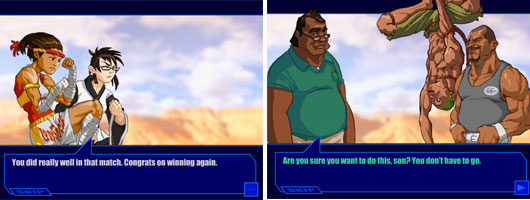
We ended up with 6 match types, all of which I enjoy (Adam hates the money game). Knock Out is the regular beat-up-the-other guy match. Then there is Ring-King, where you can damage your opponent by keeping them out of the center of the arena. Ring of Fire has a fire pit where you can score extra damage knocking the other guy into it. Money Game plays like capture the flag, and finally Ring Out is a quick match where the first guy to be hit out of the arena wins. You can also set it to switch randomly every round which keeps you on your toes.
Minigame Mode allows you to record scores for each fighter in things like the most damaging combo, the longest combo, busting targets etc... It's a great place to master combos.
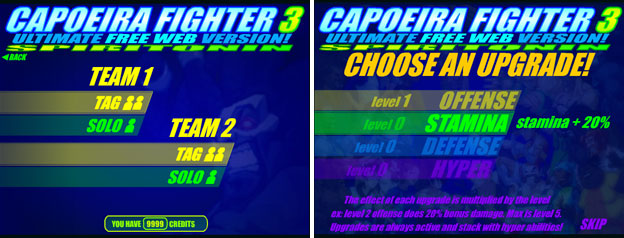
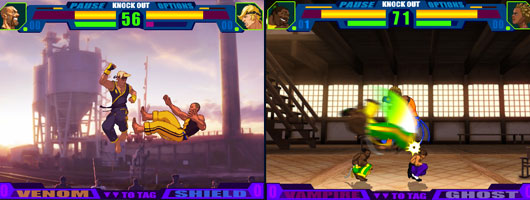
BM: You have some unique faces in the lineup, Arubim and Saryn aren't human, these are cameos from another game you created, right?

BM: The CF3 design a character contest brought in some interesting designs, I was lucky enough to be one of those selected as was Pantera by a younger artist. Did you have fun coming up with moves for these characters?
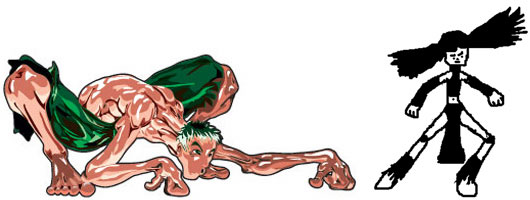
SS: Yes! They both turned out to be very fun and different from the other characters in the game. They each have very distinct personalities that come across in their vocals and attacks.

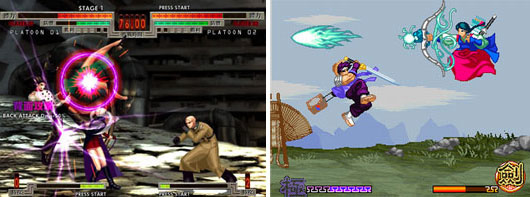
BM: Do you think people in the industry should devote more time to building these small games in a variety of genres rather than focusing only on their work project?
SS: I think a lot of guys do that already. Maybe not on the scale that we have attempted here, but you see lots of games on the web that are developed on the side. It's definitely good for me and has helped me understand the industry better.
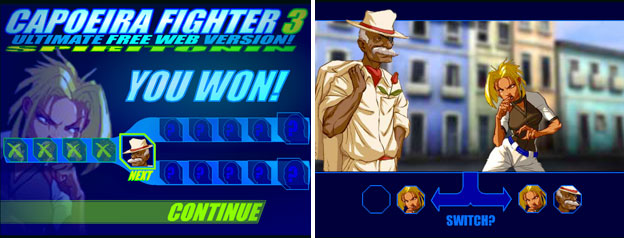
SS: It would be nice if console development was more friendly to small developers. From the research I've done, it's pretty daunting to get a game on a console, time, resource and expense wise. Even with something like CF3 that would be a simple port, it is still more than my small team could handle for a console.
BM: Do you foresee a time where digital distribution will replace traditional publishers and give you a chance to gain a wider audience and / or monetary compensation?
SS: I don't see publishers going anywhere, they will adapt. I still rely heavily on publishers for the majority of my profit because they handle all the marketing and ad sales etc...
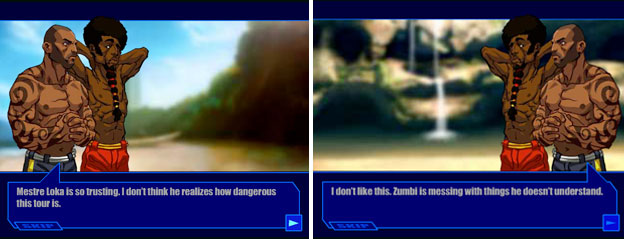
SS: Yeah I remember buying all those games looking for another SFII experience and being sorely disappointed every time. It will be interesting to see. I don't think anyone is going to do anything serious until they see SFIV do really well. Grade A console games cost so much to make now. If Capcom's strategy to return to the SFII roots proves successful, and the fighting genre regains popularity, we will definitely see more fighting games. It's all about the money.
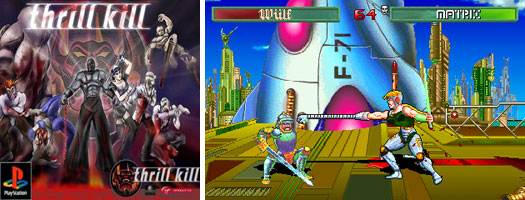
SS: I hope anything sparks interest in my fighter. It will be interesting to see if any of the bigger developers use any of my ideas like the match types and abilities attached to hyper combos...
BM: You said that your back would have healed while you were working on this title. Is it well enough for you to return to practicing capoeira with your friends?
SS: Been thinking about that seriously. I do need to get back in shape, but my family also needs me back. I think I'll be taking it easy for a few months.
BM: You are a dedicated family man but does your wife ever have to pull you away from the computer and say enough is enough, especially now that CF 3 is out? Or are you just thinking of things for CF 4? SS: My wife is very supportive, and she keeps me balanced. Plus she did the voices for several of the girls! She is very excited to have a full time husband & dad back, and I am excited to be done. I imagine a CF4 is inevitable, but there will probably be a few more iterations of 3 with some characters added and a few more features that we wanted to get into it. I hope the game does well. Thanks for the interview!
